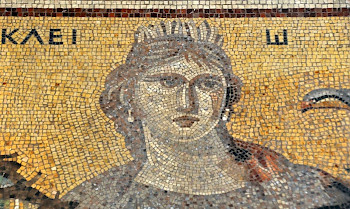Explanation
Explanation: the process of relating facts to other facts and thus creating meaning.

History may be one thing after another, but that does not mean that historians only describe event after event. They try to explain the past. Facts in themselves are not interesting; they acquire significance only when they are related to other facts. It is best if the facts and the established relations can be checked, which means that a professional historian does not only refer to his sources, but is also able to explain his explanation.
Postivism: finding laws
If you were to ask a scientist what he does, he would respond that he observes things, recognizes patterns, describes them, and uses them to predict what happens next. If the prediction turns out to be correct, the pattern is corroborated; if things turn out differently, the pattern will need reconsideration. This type of explanation is called positivism and the patterns are called “laws”. There is no shortage of scholars who have tried to recognize law-like processes in the past, but the truth is that this approach is only useful for very basic processes (e.g., demographics).
The problem is that people have a free will. Even when societies are subject to certain patterns, there will always be dissenting individuals. Therefore, many scholars think we should focus on the people of the past.
We must try to imagine how they used to think; we must reconstruct their mental world and must use this to explain why, under given circumstances, they acted as they did. For example: in the Hellenistic world – which we can describe – it made sense for the Ptolemaic government, when faced with a military emergency, to start recruiting Egyptian soldiers. Essentially, the historian tries to imagine what he or she would do under certain circumstances in a certain type of society.
Hermeneutics: turning in circles
This second type of explanation, which is called hermeneutics, implies a circular process. The historian starts by obtaining general information about the past (say, the reign of Augustus), starts to study a particular detail (e.g., marriage laws), gets some insights (for example that these laws were ignored), and refines his understanding of the past as a whole (“the Augustan system was more ideology than fact”), and uses this refined understanding to study other particulars. This is called the “hermeneutic cycle” and it is similar to what happens when we are reading a text: we understand the details from the larger context, we understand the larger context by studying the details.
In a perfect world, hermeneutic cycles would spiral us towards increased understanding of the past, but written sources and artifacts are notoriously ambiguous. Turning in circles, we can convince ourselves more and more of one interpretation, while others can spiral towards another interpretation. This is why historians are seldom in agreement: they rarely have the means to establish what is correct.
Yet, archaeology can (and does) confirm or refute certain interpretations, while the social sciences can (and do) help us distinguish between the plausible and the less plausible.
Complete subjectivism?
In the end, however, the best guarantee that a particular explanation is better than another, is the amount of data – however ambiguous – to back it up. That explanation is best that creates the most coherence between the most data of the greatest possible diversity. As a guarantee, it is not perfect, but the study of the past is not a completely subjective activity.
Other positivism and hermeneutics are the two main explanatory models, there are others as well:
- The comparativist approach;
- The narrativist approach, which is sometimes regarded as a variant of the hermeneutical approach;
- The “physics of society”: a promising field that still has to prove itself.